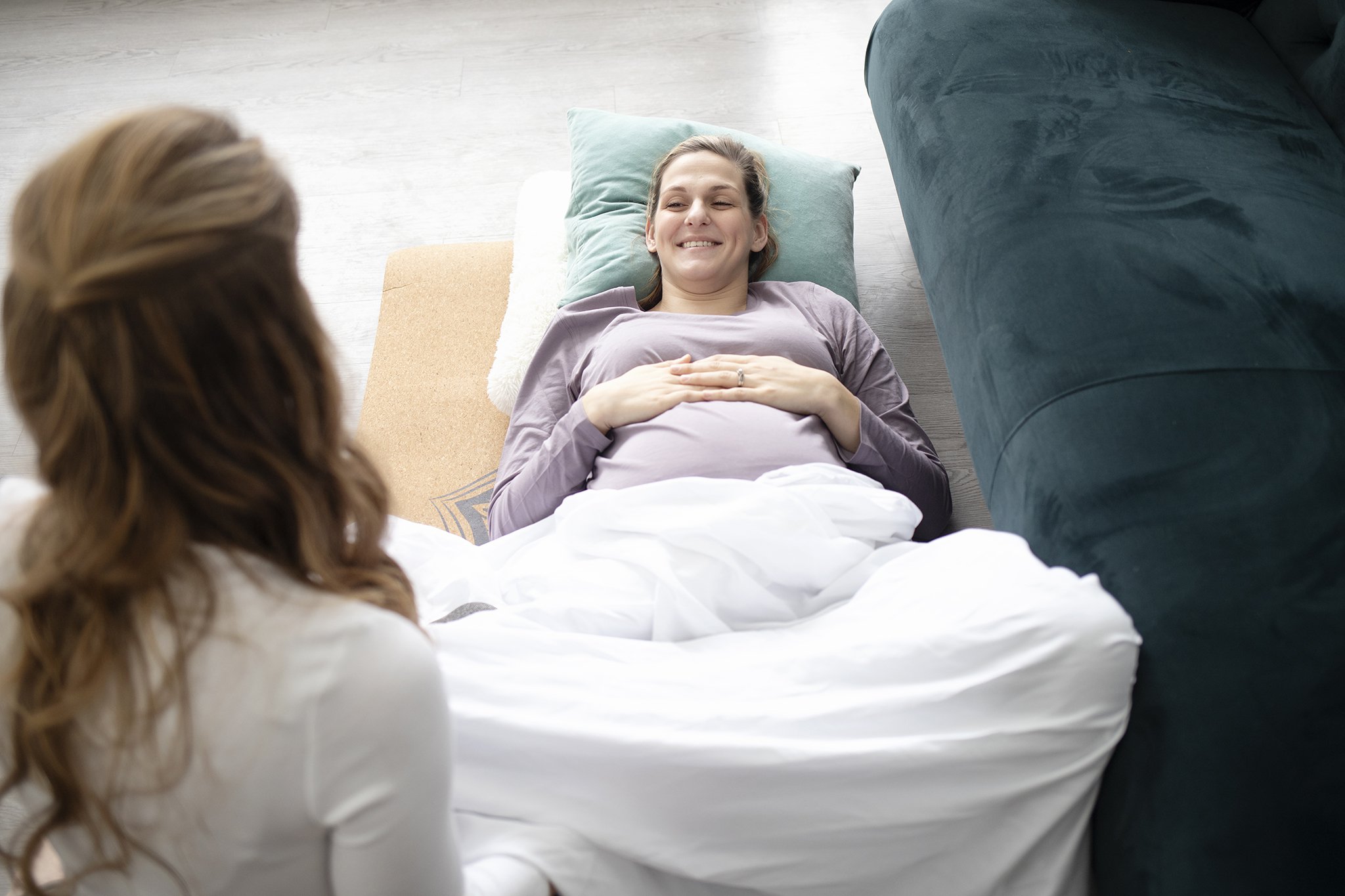Pelvic PT is so trendy right now. Yes, this is something one of our client’s Physicians told her when she asked for a referral (thank goodness we actually don’t need one and this client took matters into her own hands- but more on that later). Pelvic PT is gaining more traction and becoming more buzzworthy. And to this we say- finally! Pelvic PT is the missing piece for many clients for hip pain during pregnancy, back pain during pregnancy, sciatic pain during pregnancy, digestive issues, anxiety, Diastasis Recti, and pain anywhere in the body (see more on that in our social media post here(opens in a new tab)).
But what does pelvic physical therapy entail? What does a session look like?
In your first session, your evaluation, your pelvic PT will first talk to you about your symptoms and medical/surgical/obstetric history. They will ask about past injuries and listen to your story leading up to the symptoms you’re experiencing. They may also ask about mental health and trauma history. Our bodies (and particularly our pelvic floors and pelvises) are greatly affected by our emotional state and pasts. The discussion in the beginning will help your Pelvic PT to determine what they want to do in the physical examination.
The Physical exam should include a whole-body exam. This should include:
Your pelvic PT watching you do movements that cause your pain or symptoms.
For example, if you have pain while running, your pelvic PT would watch you run and look at specific movements that make up running to determine how the muscles and joints are working and what is causing the problem Or, if you have back pain while lifting your kids, your Pelvic PT might look at you lifting to see your strategy
Testing muscle length or strength
Based off the functional assessment, your Pelvic PT will want to assess specific muscles and joints. This could look like having you lie flat on your belly and press on the spine to see how mobile it is or bringing the hip into specific positions to see how flexible it is. This can help your Pelvic PT tell if your joints or muscles are limiting your movement.
Touching the pelvic floor muscles as you move This could be externally or internally.
Typically, at Resilient Motherhood, we take an outside – in approach, meaning we start externally by looking at movements, breathing, and touching the pelvic floor and core muscles from the outside to see how the big picture is working first. Then, if you’re open to it, with your permission, we do an internal pelvic floor exam. This could be at the first session or in a subsequent treatment session.
The external pelvic floor exam looks like:
The Pelvic PT touching the pelvic floor near the bum hole through your clothing. This is helpful to get a big picture look at how the pelvic floor works when you are standing and moving. We can only feel one or two muscles in this testing position, so it is important to do an internal pelvic floor exam so we can assess how all of the muscles in the pelvic floor are working with the rest of your body.

The internal pelvic floor exam looks like: This picture is a great representation of how our internal exams look with a house call. Most moms are more comfortable lying on a mat on the floor and use a couch as a prop. We always have a mobile treatment table available if that’s better for you!
If you’re seen in the clinic, we have a table already set up for an internal exam.
At the end of the examination, your Pelvic PT will get started on treatment to resolve your issues. We may do some hands on work to calm down muscles or get joints moving and give you exercises to do at home. Your Pelvic PT might also give you tips for changing posture, diet, mental hacks, and mind-body tricks to help calm your pain or change your symptoms.
